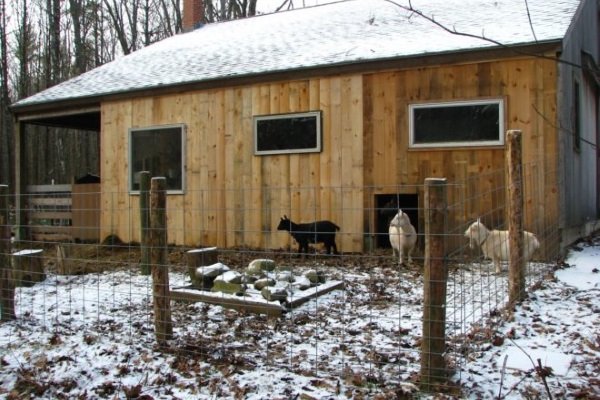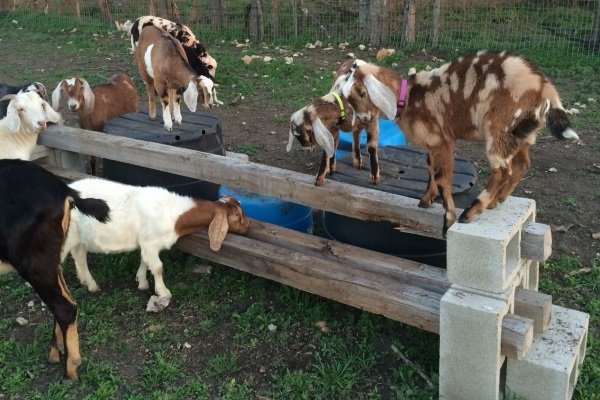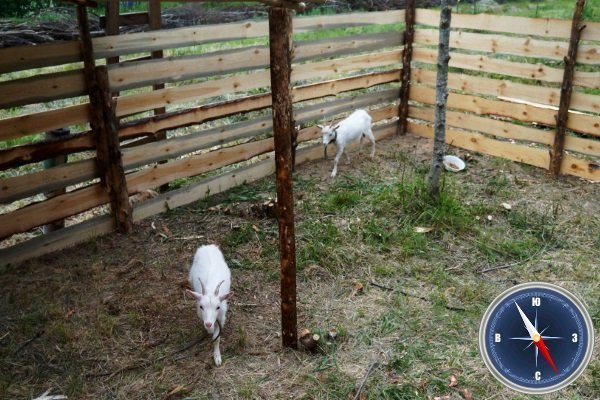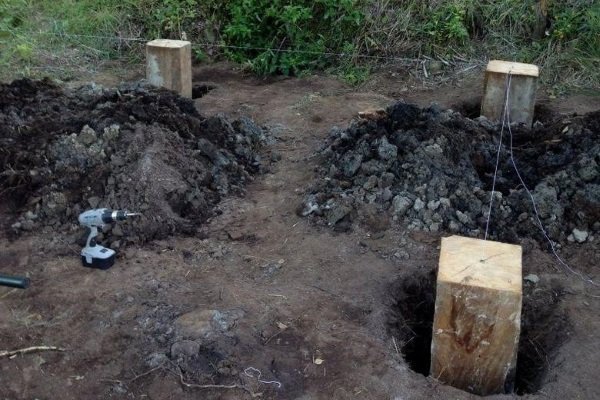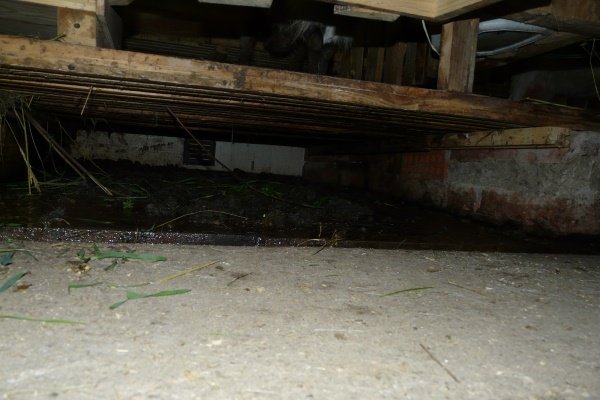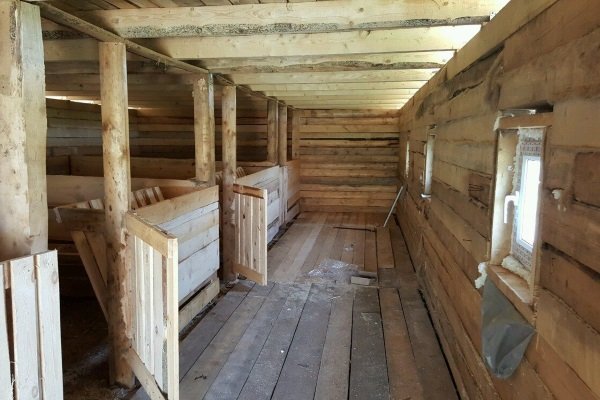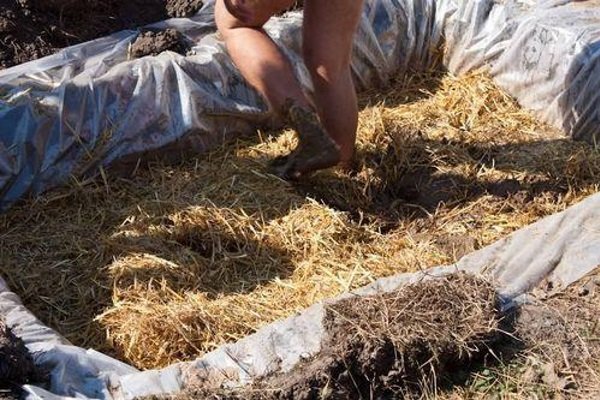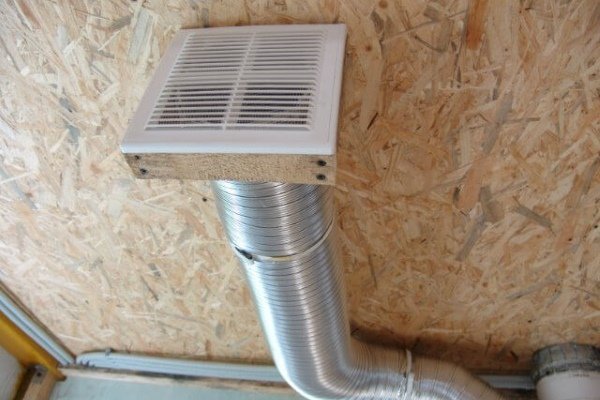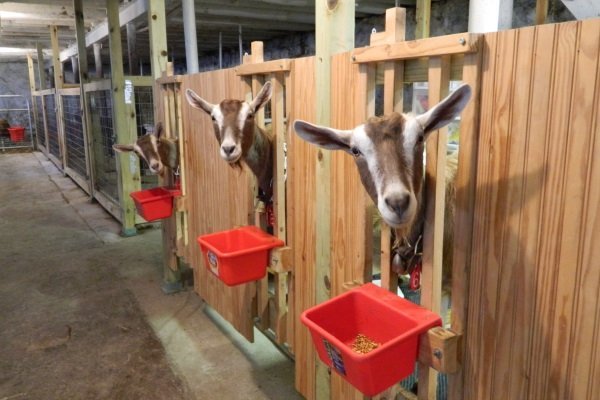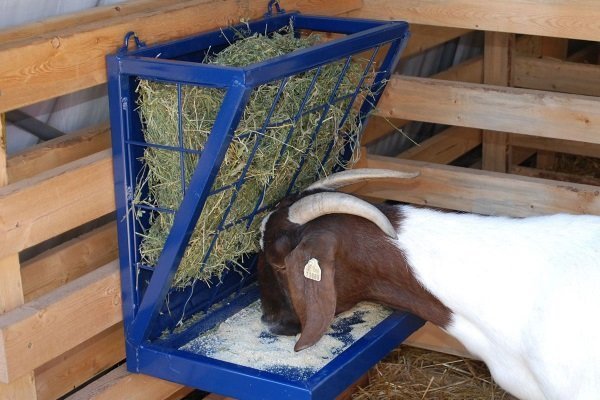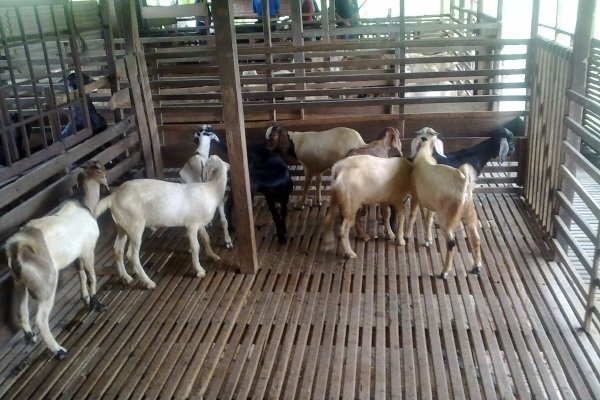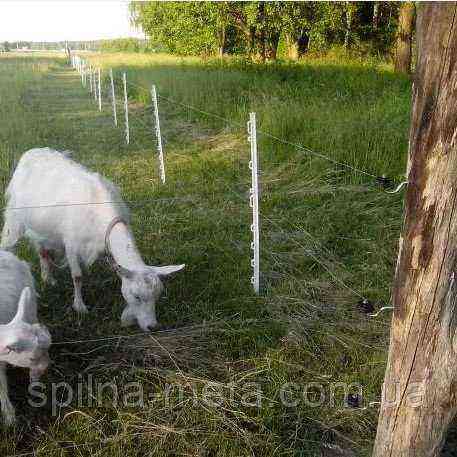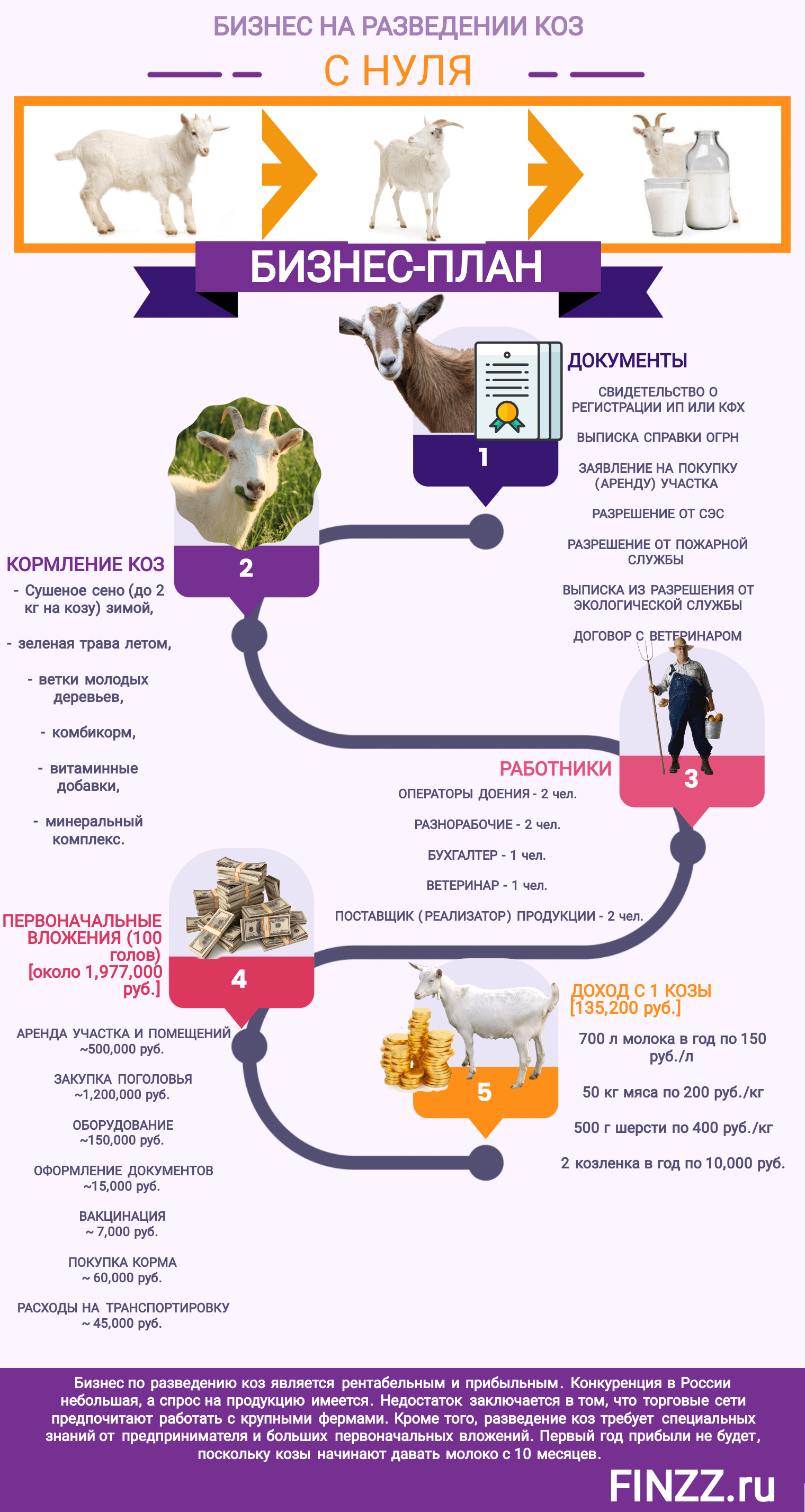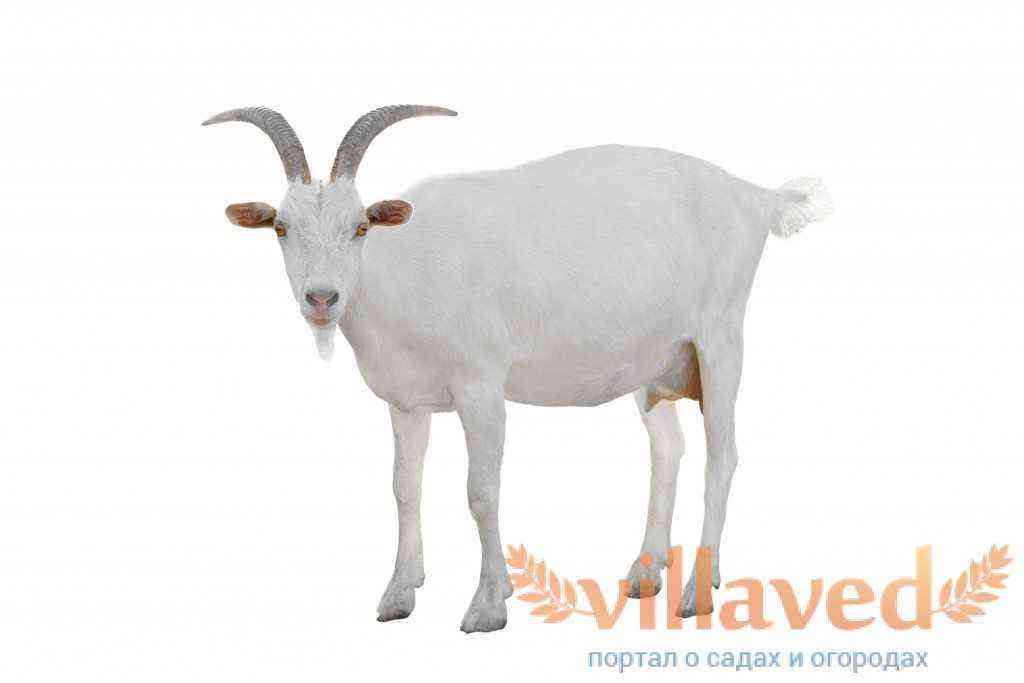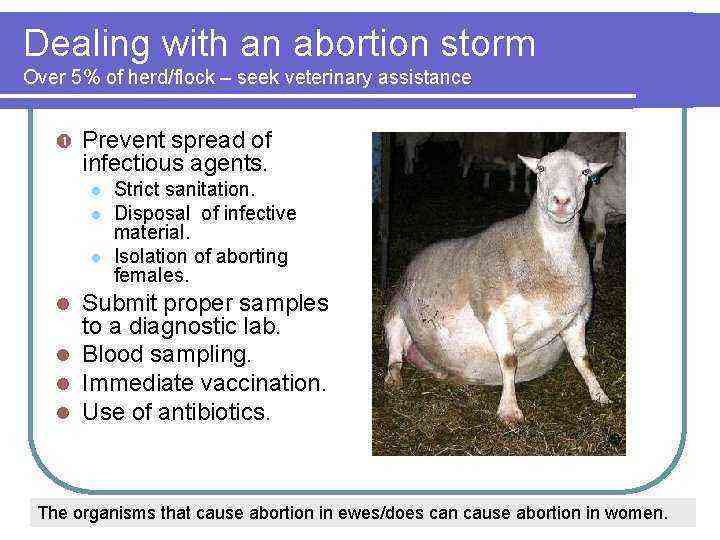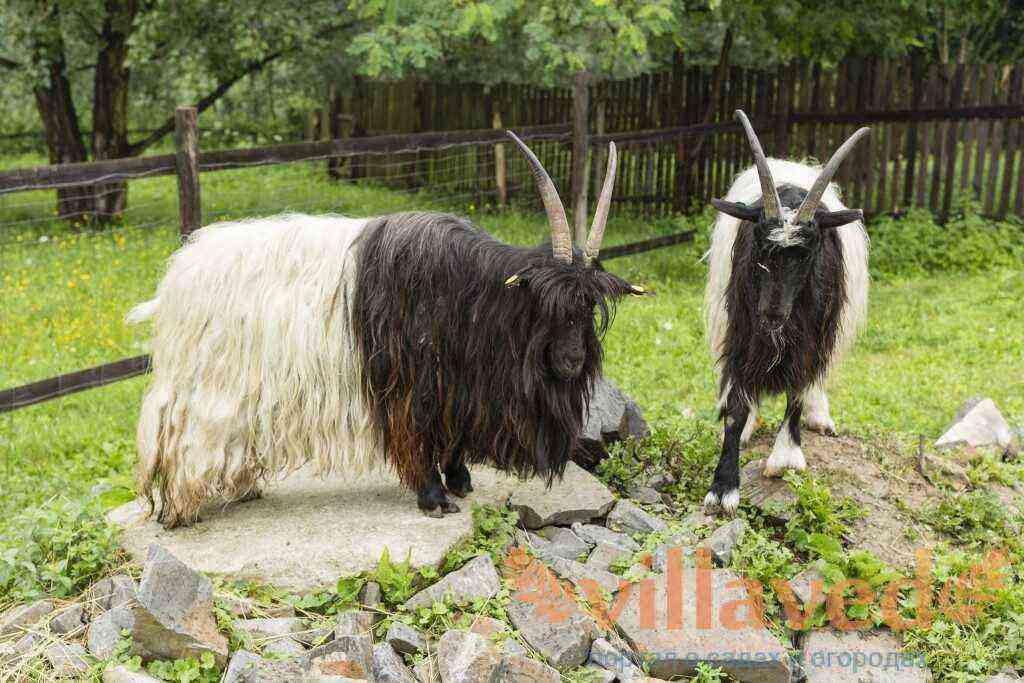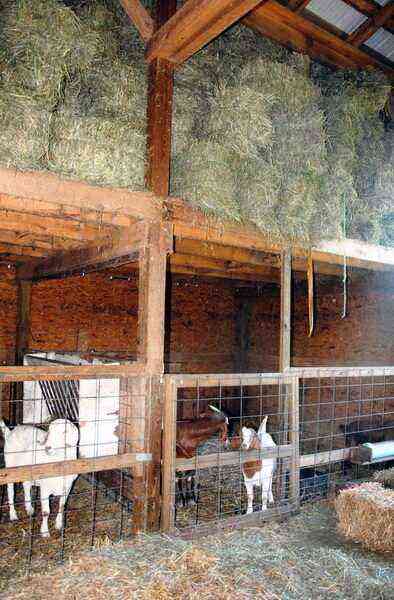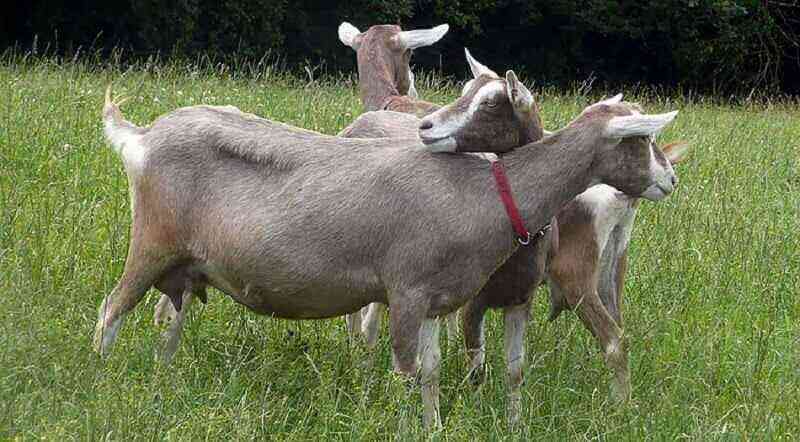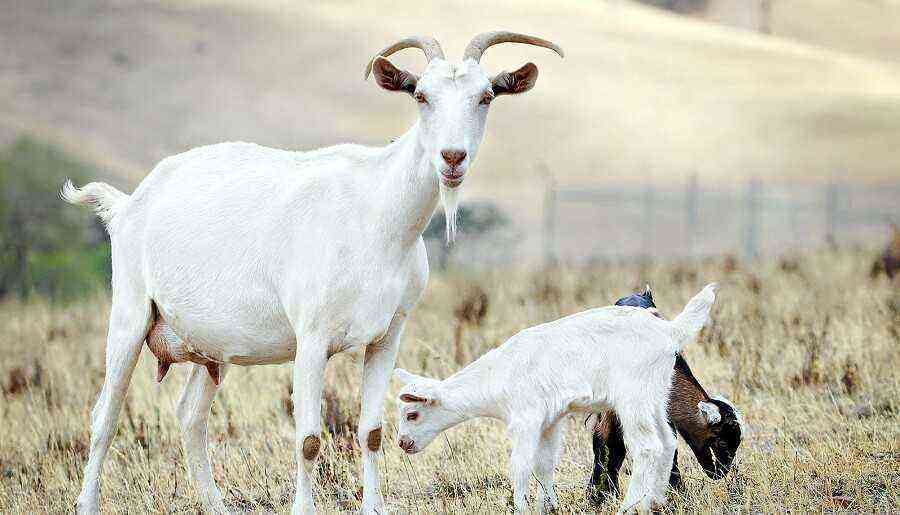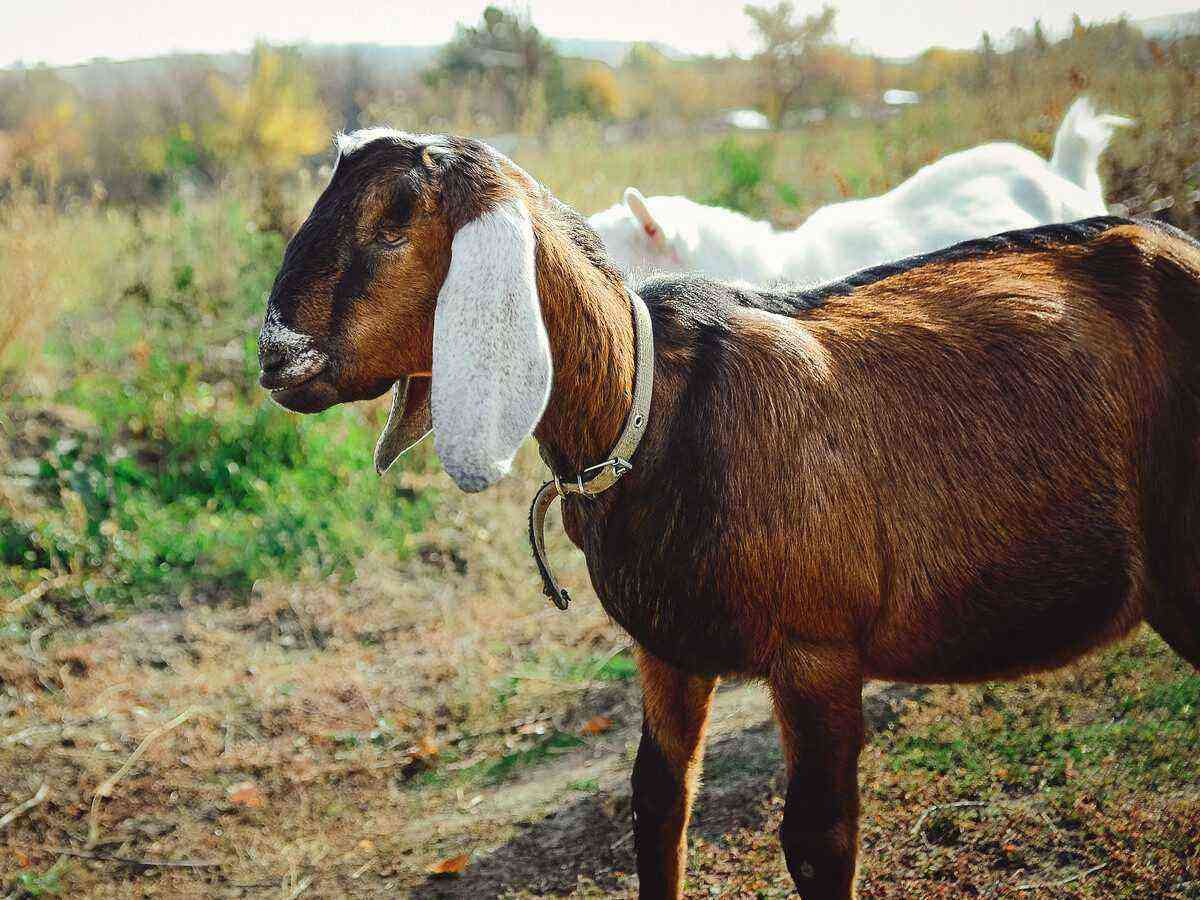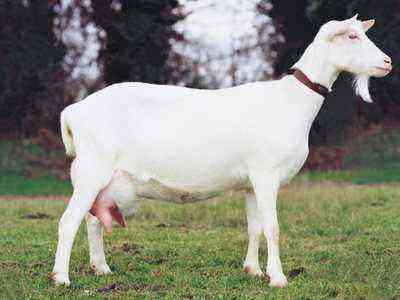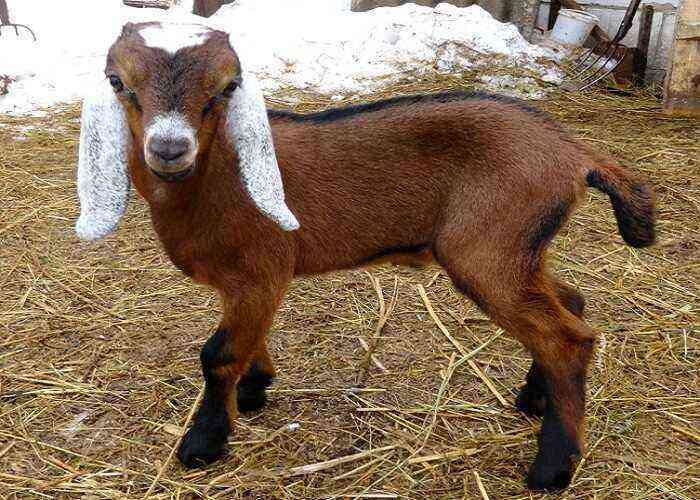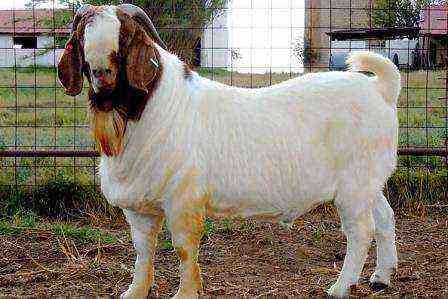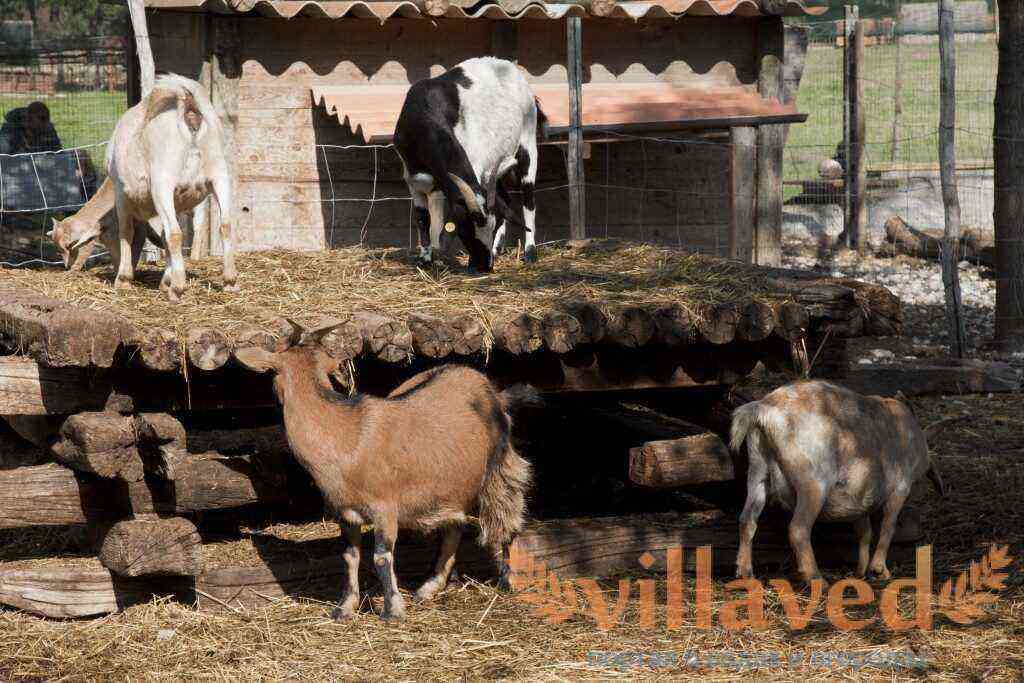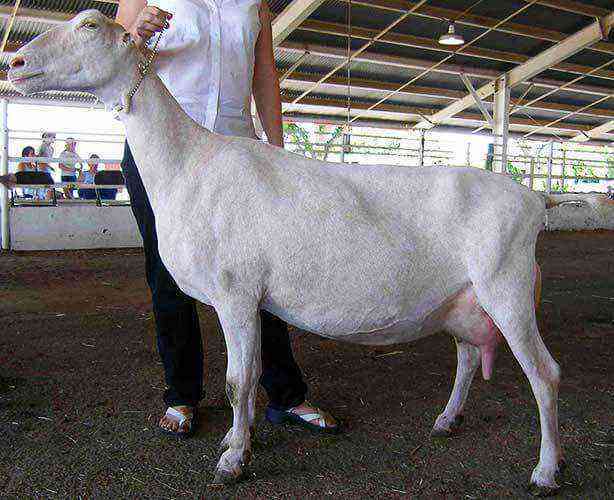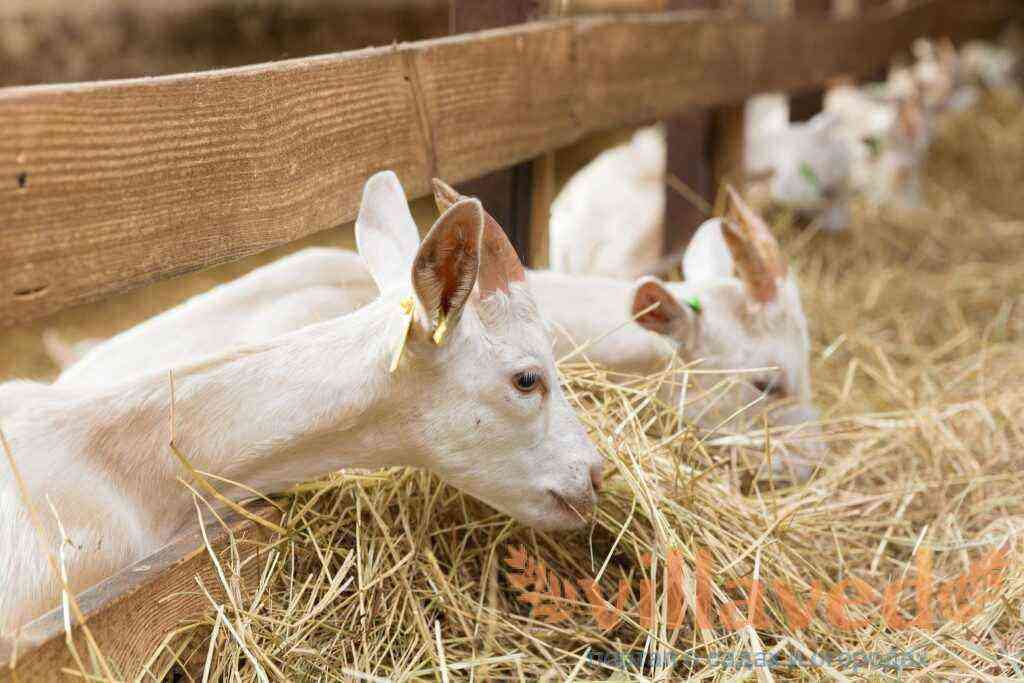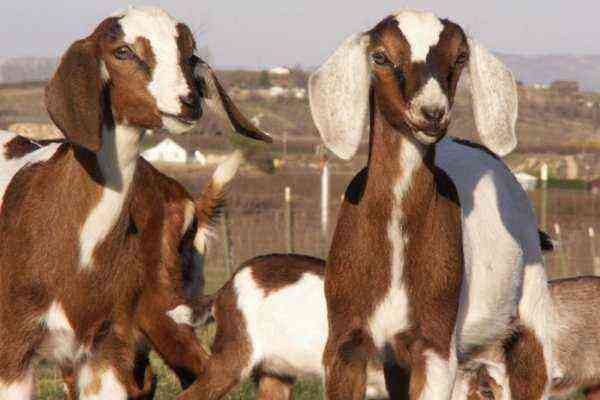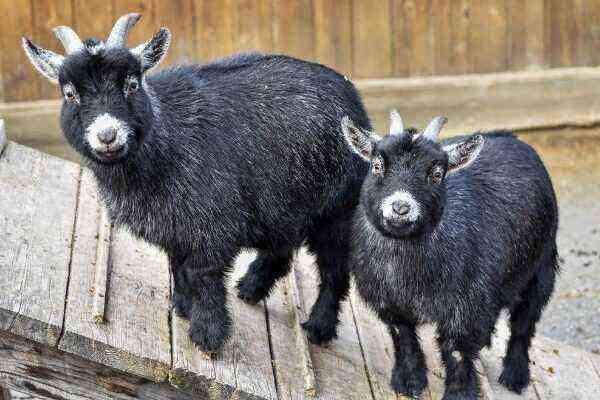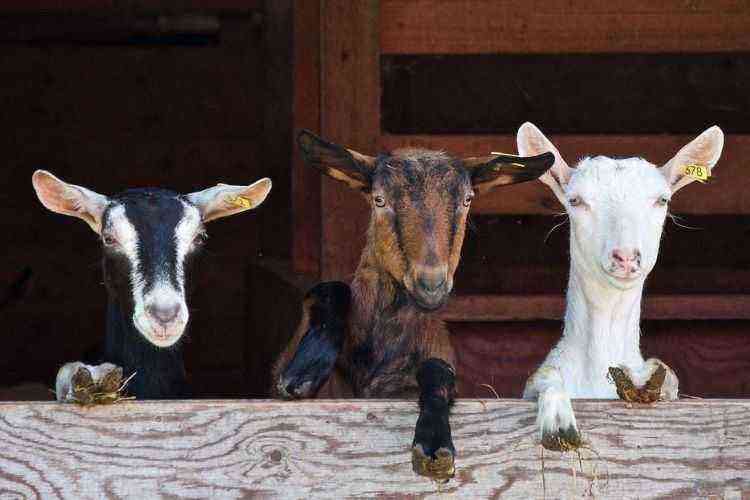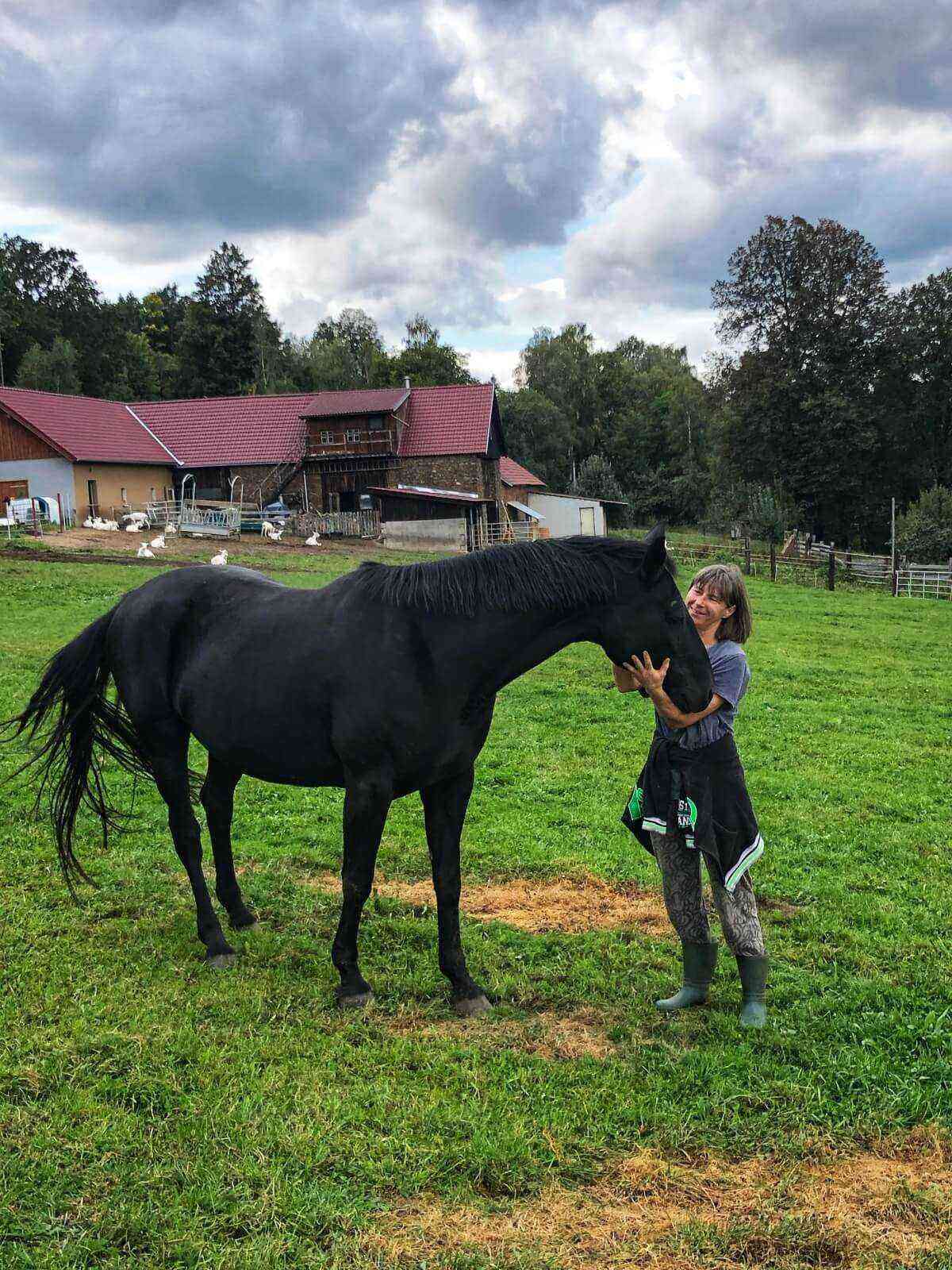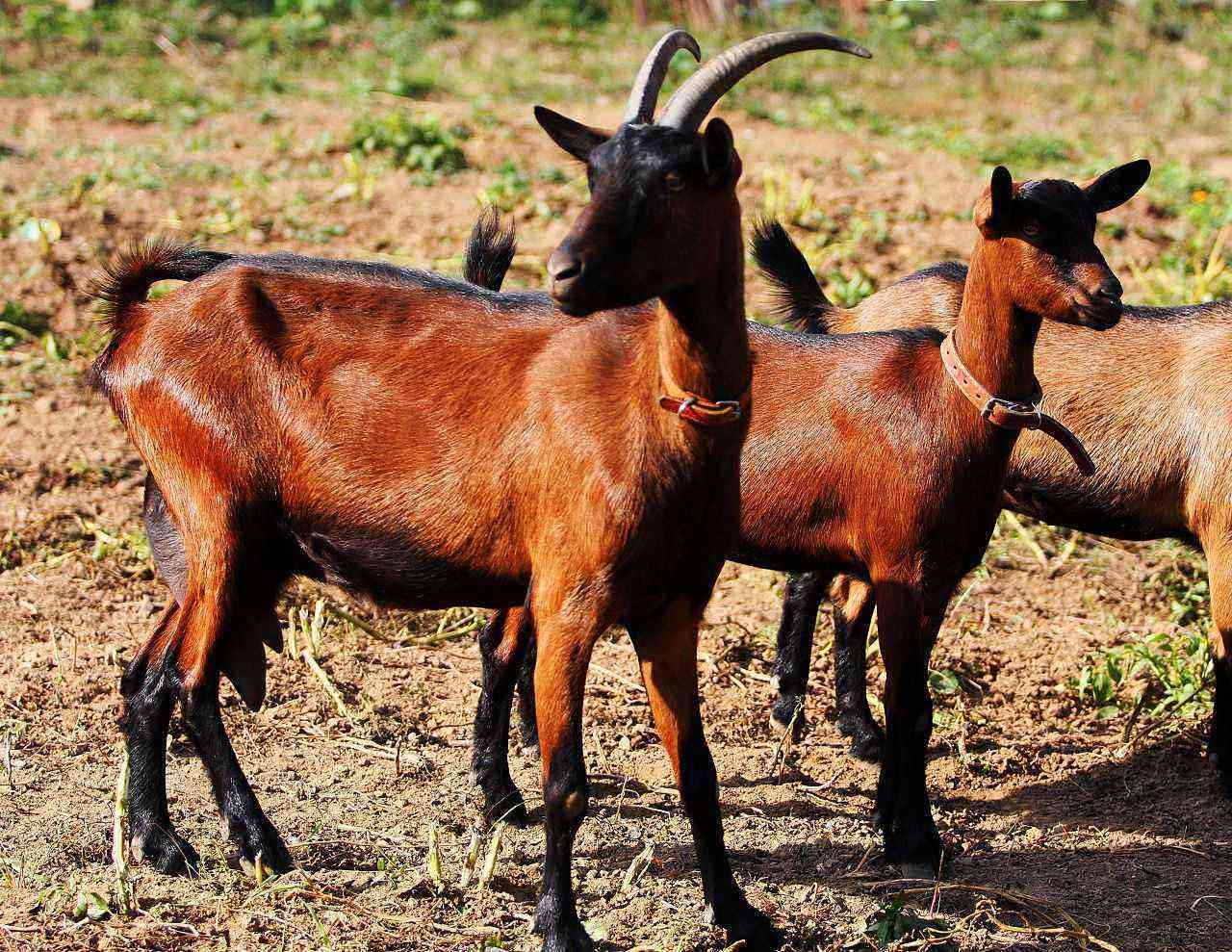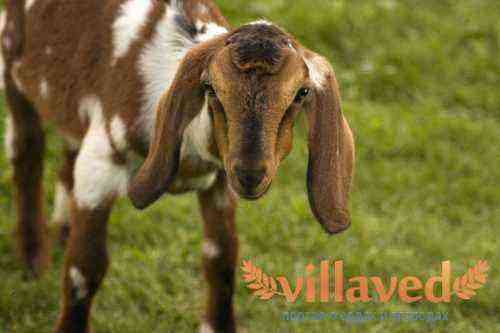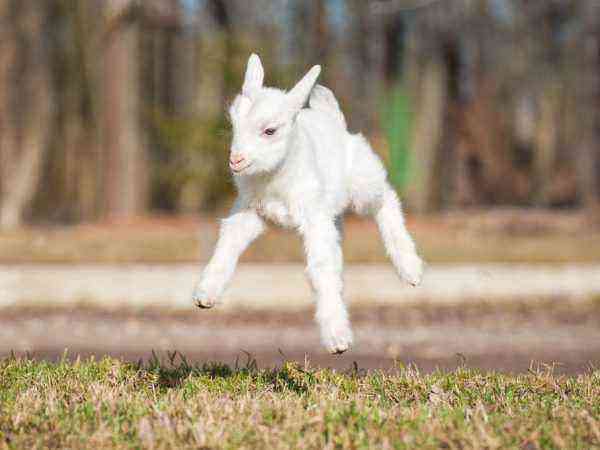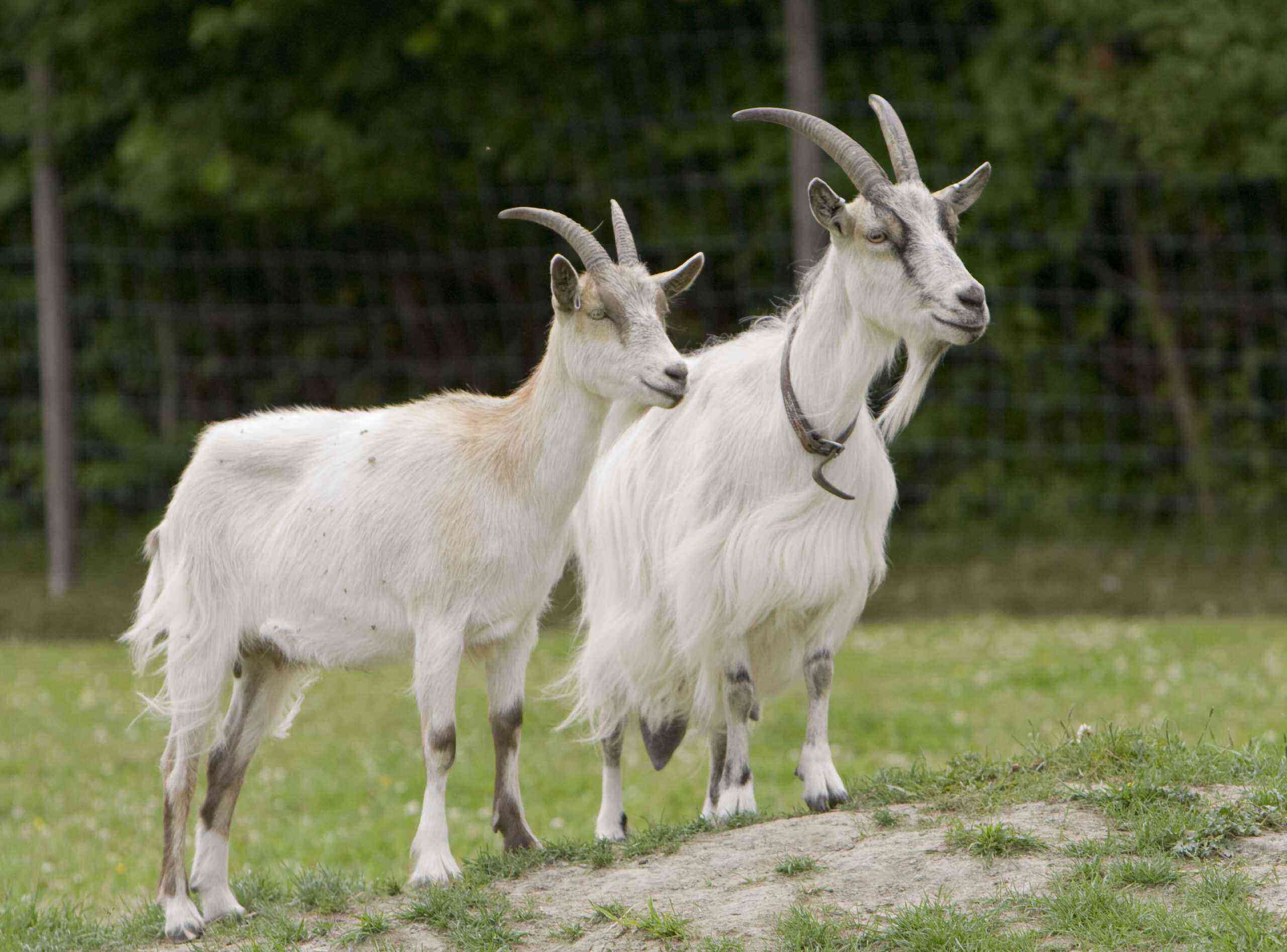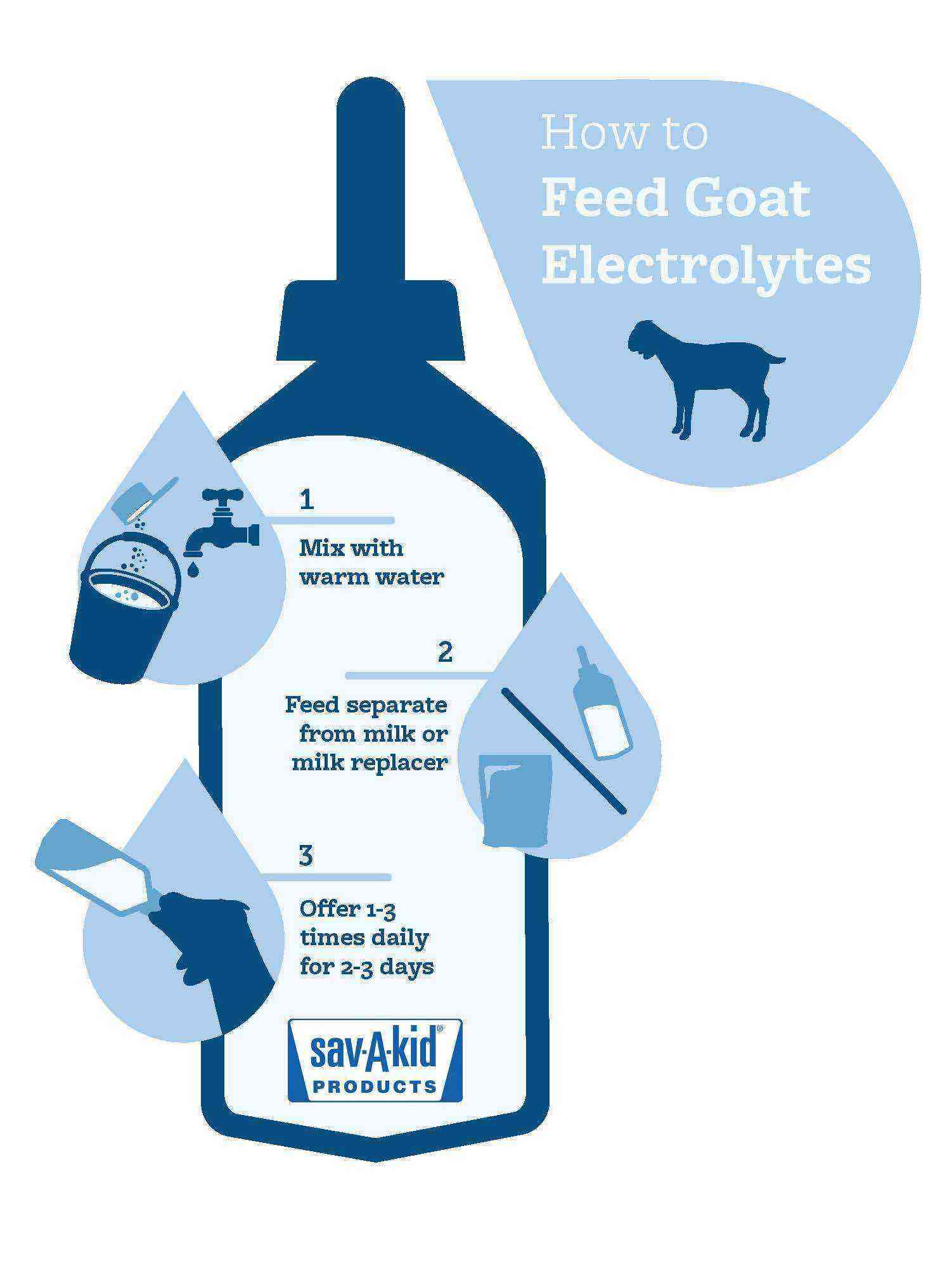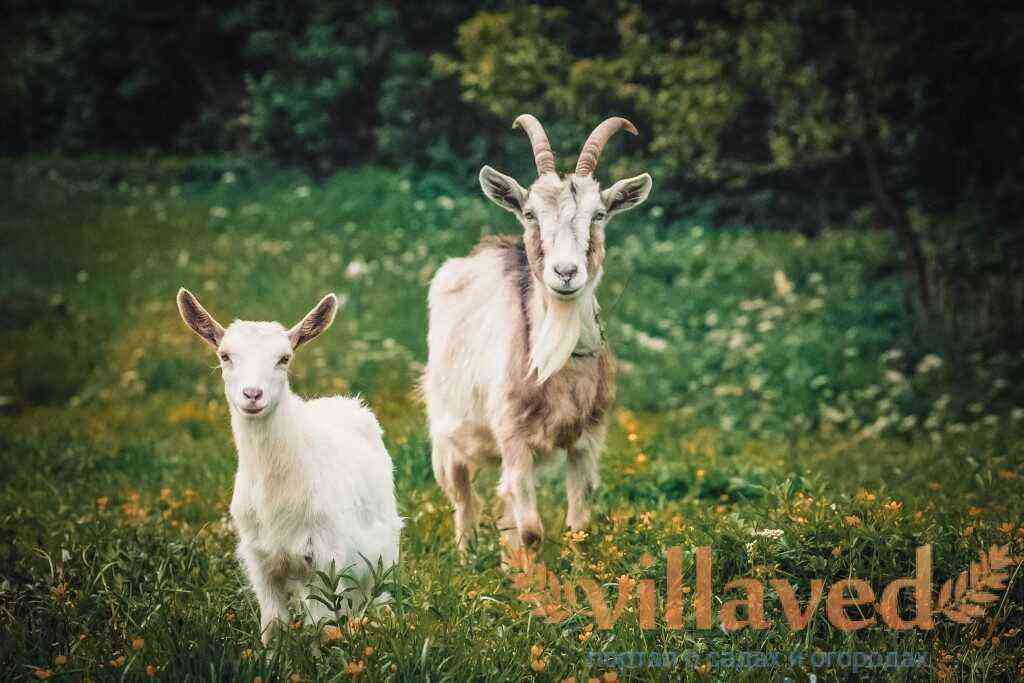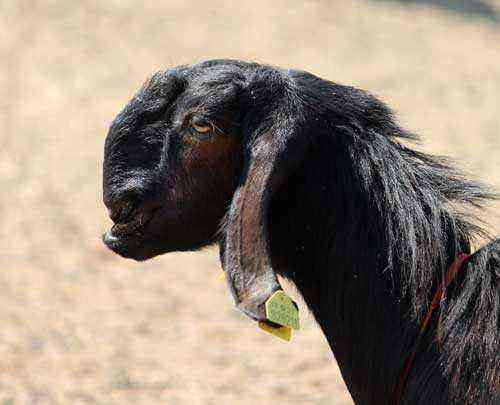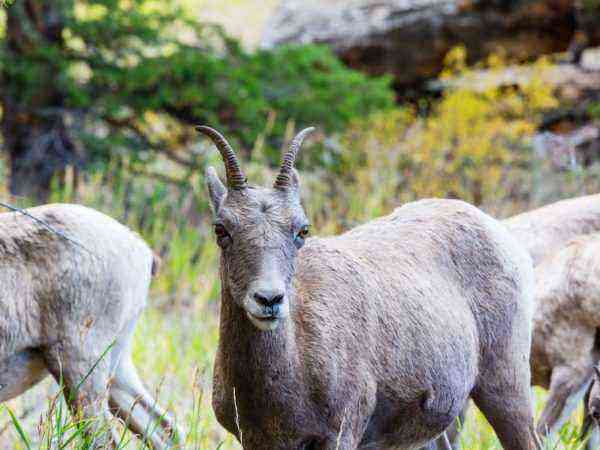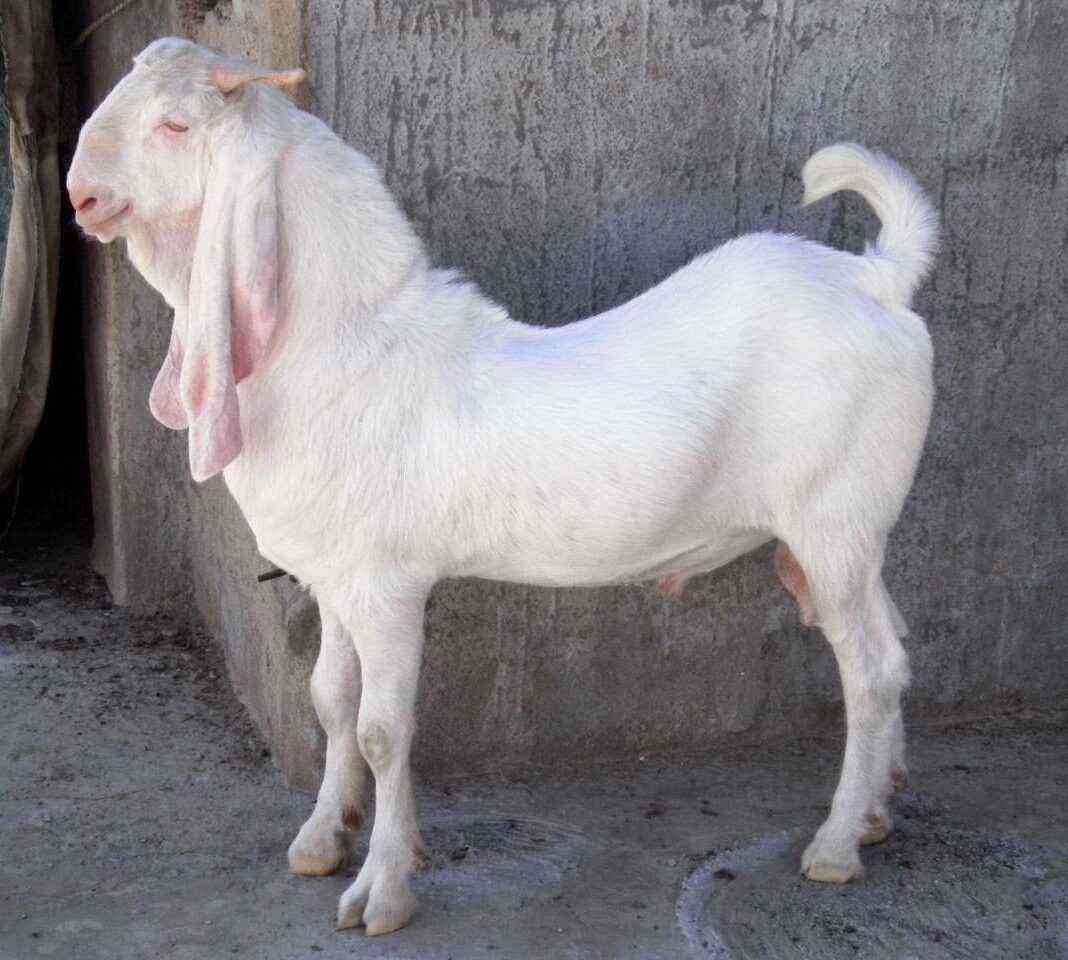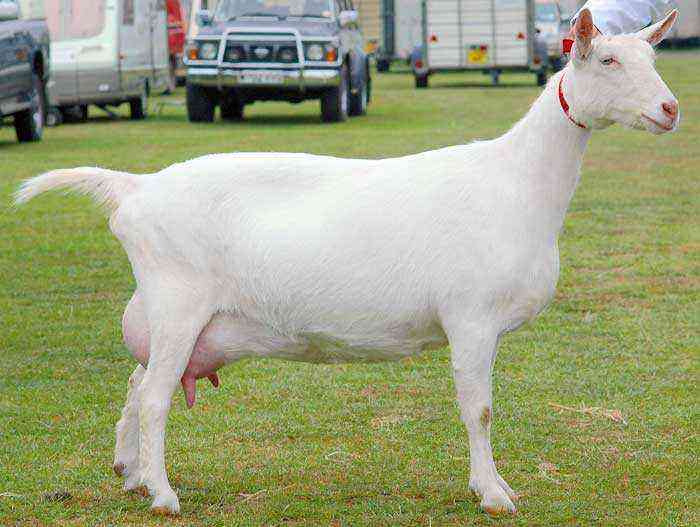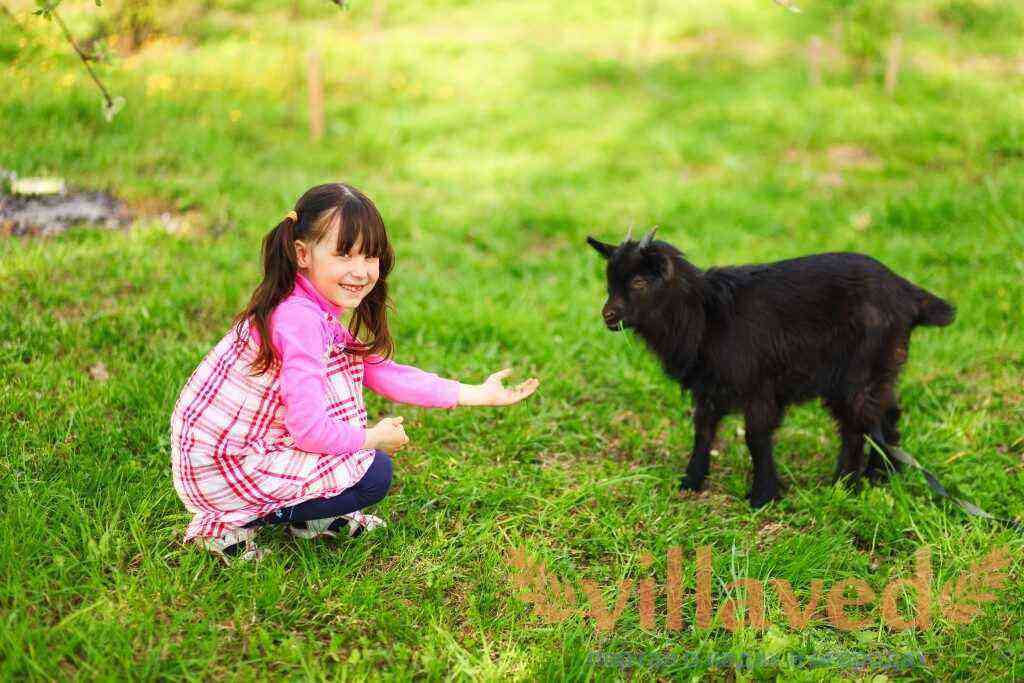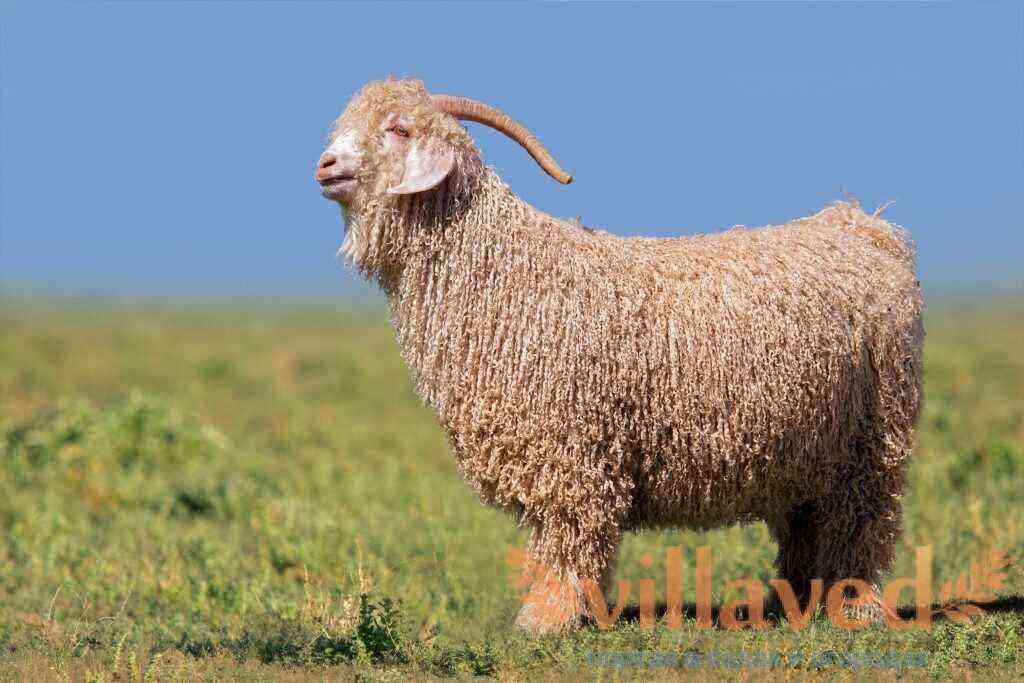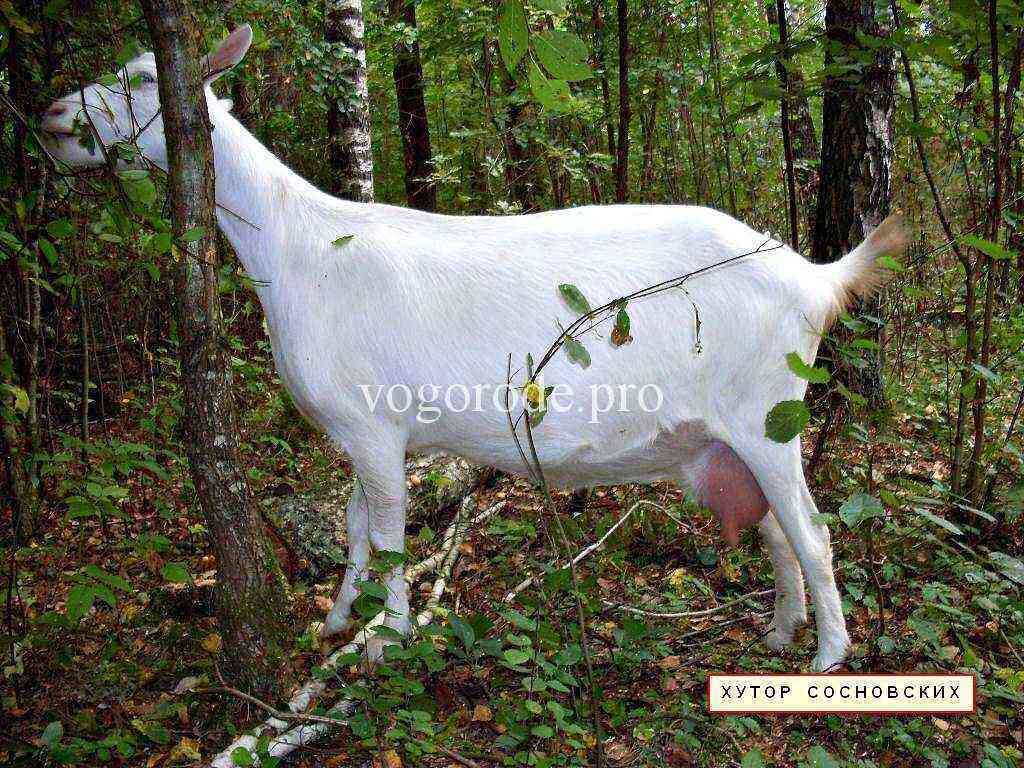With the decision to raise goats comes the question of where to keep them. This should be a room that meets the needs of the wards and is convenient for the owner when caring for the animals. You can build a goat shed with your own hands. Even a beginner will do this, subject to proper planning and choice of materials. What will need to be taken into account during construction and what materials to stock up will be discussed in the article below.
Basic requirements for accommodation
Keeping goats is a simple matter, because these animals are quite unpretentious. They can live next door to other livestock and get along well next to a bird.
In warm climatic regions, in spring and autumn, goats do not need a barn at all; a canopy in a place protected from drafts will be a sufficient condition for keeping. For the winter, they need to be transferred to a more permanent building, where the minimum temperature does not fall below 8 degrees Celsius.
Building a barn for goats separately or giving them a nook in a common room is a master’s business. It is economically beneficial when all the cattle is in one building, separated by strong partitions. But still, if there is such an opportunity, it is desirable to build an independent goat house.
Its size is determined based on the planned number of individuals. Ideally, each adult animal should have its own place. It could be a cage or a paddock.
The joint maintenance of adult goats is allowed. In the barn, it is necessary to provide for a separate maintenance of female cats, goats and young animals. This condition will prevent competition, conflict, make it possible to plan the reproduction of animals and save kids from the negativity of the older generation of goats.
Goats adapt to both hot weather and cold weather, but do not tolerate dampness, so the barn should be dry and warm enough. With proper construction, the goat’s rue does not require the installation of a heating system, because the animals themselves heat the air up to 8-10 degrees Celsius. In addition, provide for sunlight to get inside, conduct electricity and consider a ventilation system.
It is recommended to attach a paddock for walking animals to the barn, provided that the temperature regime on the street is from 12 degrees Celsius and above. You can also feed the goats there.
Choosing a place to build
When choosing a place for the construction of a goat’s rue, give preference to a small hill or plain. In the lowlands, the barn will be damp, which means that the animals will constantly get sick and wither away.
Before construction, the area for construction must be cleared of vegetation: remove trees and shrubs with maximum uprooting of the root system. After the preparatory work, level the site.
Keep in mind that each adult goat needs about 1 sq. m. area, and for kids – 0,6-0,8 square meters. m. Position the building on site so that the facade and the paddock are located on the south side.
Building and materials
Depending on the reliability, solidity and time of operation of the building, materials for construction are selected. A capital structure requires much more material costs, effort and knowledge than a wooden structure.
Foundation
The foundation for capital construction is carried out in a tape way. To do this, it is necessary to dig trenches along the perimeter of the goat’s rue with a depth of about 45-50 cm. Above them, formwork is installed from improvised material, providing a concrete pouring height of 25 cm above ground level. Concrete mixture is poured into the obtained foundation recesses. For the foundation to dry, it takes from 3 weeks to a month during a warm, rainless period.
For a wooden structure, a foundation of pillars or piles dug in over the area of the barn is suitable. Leave the distance between them no more than a meter. Remove the sod layer of earth over the area. Dig holes, fill in a pillow of screenings and gravel 20 cm thick, tamp it down. Install the pillars in the recesses, pouring them with concrete.
Filling and laying the floor
For a floor in a solid goat’s rue, you first need to make a well-packed earthen or adobe base. Next, lay the floors from above:
- boards;
- flat slate;
- roofing material and metal sheets.
Another option is to pour the floor with concrete over a bed of slag or gravel. In this case, it is necessary to observe a slope of 2 cm per 1 meter so that the urine flows into the sump. For a concrete floor, it is worth stocking up on a large amount of bedding, since use without it is unacceptable due to the fact that even in summer the floor is very cold.
The best method is considered to be the installation of gutters along the floor in the direction of the container for collecting urine and feces, and the organization of a removable flooring in the form of a wooden grate on top. Such a floor will be dry and warm, and bedding material is practically not required.
Building walls and windows
The walls are built of wood, brick, foam and gas blocks, adobe. Stone materials are not recommended – the barn will be cold and damp.
For a wooden structure, a timber sheathed with a board with an internal space of 10-15 cm is used. To preserve heat in the goat’s house, these voids are filled with expanded clay, sand, fire or any insulation. Brick goat’s rue is plastered for insulation.
Build walls with a height of 2-2,5 m. It is not worth it above, because it will be difficult to warm up a large amount of air in the barn in winter. Smooth walls are easy to clean and disinfect.
Place windows and doors on the south side of the building. For safety reasons, the door should be double-leaf, and its opening should be carried out outwards. Opening the upper sash, located at a height of 1,5 m above the floor, is a way to ventilate the room.
For a small goat house, one window opening near the door is enough. For large sheds, several windows are required at a height of 1,5 m. Their number is determined by a ratio of 1:12 to the total area of uXNUMXbuXNUMXbthe building.
Arrangement of the ceiling and roof
It is recommended to hem the ceiling with a shed roof with a board, and use mineral wool, polystyrene foam or other insulation for thermal insulation. Lay a layer of thin plywood on top of it.
The roof must be secure. An excellent material for it is slate or tile. A shed roof is covered with a slight slope so that snow and rainwater do not linger on its surface.
A gable roof will be more expensive, but it becomes possible to organize an attic space where you can store hay, equipment, or use it for other needs. With this version of the roof, the ceiling is insulated with a mixture of straw and clay.
Treat all wooden building materials with primers, and soak floor boards with drying oil. So the operational properties of wood will increase, extending the period of operation several times.
Necessary communications
If communications are laid illiterately, then all efforts to build a goat shed can become futile. Animals in uncomfortable conditions can not be. Therefore, treat this stage of construction responsibly.
Ventilation
Ventilation will provide ventilation of the room, access to oxygen inside and maintain the level of humidity inside. The simplest supply and exhaust form of ventilation consists of:
- pipes with a diameter of 100 cm or more, installed in the center of the roof or under the ceiling in the far corner of the barn;
- pipes above the floor near the front door.
To prevent drafts, debris and rodents from entering through the ventilation into the barn, the pipes are covered with protective dampers.
The optimum humidity level in a goat shed is 70-75%.
With a large area of goat’s rue, it is recommended to install an automatic ventilation system.
Lighting
The level of illumination of the premises is very important for goats, especially for young animals. In addition to natural light, place electric lamps indoors. They should be at a height inaccessible to animals and be protected by a grill or ceiling.
Отопление
Heating is necessary only in areas with a cold climate, where maintaining the indoor air temperature at around 8-10 ° C is impossible without the use of additional heat sources. It is forbidden to use the oven in the barn. It is recommended to carry out steam heating with a boiler in a separate brick shed.
manure removal
Cleaning and cleaning of manure should be done twice a day. This will keep the livestock from developing infections, maintain hygiene and keep the humidity level at the proper level.
If there are pallets, they are taken out and washed. A system is often used when a ditch is made under one wall for raking manure into it, followed by cleaning.
Arrangement of the premises
Properly equipped goat’s rue space will provide comfort for the animals and convenience for the owner when caring for the wards.
Stall
The common room reserved for the stalls can be divided using wooden partitions with a height of no more than 1,5 m. If individual stalls are planned for each goat, then their size is considered to be at least 2 × 1,5 m. leashes.
Crowding when keeping a goat affects its general condition and reduces milk yield.
Make the front wall in the form of a door on reliable canopies and locks. Place a nursery on the inner surface of the door to optimize space and ease of feeding. Thus, it will not be necessary to go inside the table for each feeding of the goats.
Floor mat
Use straw or sawdust as bedding. They will protect animals from the cold floor, if it is not covered with wood, and additionally absorb moisture. Don’t skimp on bedding. This will protect the goats from various infections and inflammation of the udder.
Manger and feeder
The nursery is designed for laying hay and grass in them, and concentrated feed, vegetables and fruits, mashed cereals, etc. are poured into the feeders.
Goats often spoil hay and other feed by sorting, scattering and trampling them. To avoid such wastefulness, provide comfortable nurseries and feeders in the barn, located in a state suspended 0,5 m from the floor, and place a tray under them so that the food falls into it, and not onto the floor. Later, it can again be poured for food by animals. Small boards on the feeders will also be useful.
The nursery needs space for salt stone and mineral supplements. Keep this in mind when sizing so that later the goats don’t throw away hay in an attempt to get to the salt.
Stall
The milking parlor facilitates the milking of the goat by ensuring its immobility during the process. You can buy it ready-made or make it yourself from wood. The milking machine is a kind of box made of thin timber with a feeder at the head and the ability to fix the animal’s head. Often this part has a tighter space, which does not allow the goat to turn its head during milking.
The design must be reliable and have a ladder so that the animals can safely climb the height of the machine. It is necessary to install a cage for milking in the quietest and most peaceful place of the goat house.
If automatic milking is envisaged, then there must be space for the machine and containers next to the machine, as well as an electrical outlet and sufficient lighting.
Water supply
Make goat drinkers from ordinary buckets by hanging them above the floor. So the animals will not spill and turn over the container with water. If possible, you can install automatic drinkers. They require a water supply to operate.
Summer barn for goats
A summer building for keeping goats can be made in the form of a canopy with a fence. The main thing is that the animals have somewhere to hide from the scorching sun and precipitation. In addition, it is desirable to make a goat resting area protected from through wind.
Another option is a simple wooden building. In southern latitudes, a summer house can also be used in winter. It is enough to insulate it and eliminate all the cracks.
The equipment of the summer barn does not differ from the capital goat house: drinking bowls, feeders, nurseries and delimitation of territories for goats, young animals and a goat are obligatory.
Insulation of the barn for the winter
Measures for warming the goat’s rue are not required in regions with a temperate climate. If the goat house is made of wood, then over the summer the materials could dry out and gaps will appear at the joints. Therefore, the only measure to prepare for the winter period will be to eliminate these gaps and other openings through which cold air can enter inside.
Before the onset of cold weather in cold areas, it is necessary to prepare a barn. For this:
- Patch all the cracks and holes throughout the area of the goat’s rue.
- Insulate ventilation pipes.
- Check the roof for integrity.
- Stock up on bedding.
- Check the heating system, if any.
Ensuring year-round walking
Goats need to move, so if the outside temperature is more than 12 °C, they need to be released into the corral. The area for animal walks is determined at the stage of site selection and barn planning.
Paddock Requirements:
- Area not less than 5 sq.m. per animal in the absence of grazing.
- Area fencing. The height of the fence is not less than 1,3 m.
- Provide shelter from the sun. It can be a canopy or trees. Goats love to eat bark, so protect the trunk of each tree with a metal fine mesh.
Budget construction options
To make the goat shed durable, comfortable for animals, but at the same time does not require large construction costs, use the following tips:
- If you are just starting out in goat farming, do not build large capital sheds. Build a goat house from scrap materials or allocate space in a shared barn with other animals. If the desire to breed goats strengthens next season, feel free to consider building an individual goat house.
- Keep in mind that brick buildings, although more durable than wooden ones, still require additional costs and are not deprived of shortcomings. For example, a brick can become damp in winter, so the walls must be sheathed from the inside with moisture-resistant plywood or covered with a layer of plaster, and covered with sheet metal on the outside.
- Wooden buildings perfectly keep the heat indoors, cool in the summer. But to increase the service life, they require impregnation with special antifungal and water-repellent compounds. Plank flooring changes as it rots or becomes thinner.
- When insulating a barn, keep in mind that the use of polystyrene foam is cheap, but rodents start up in it, which can nullify all work. Therefore, it is more profitable to use mineral wool or glass wool.
- Do not save on the construction of the foundation and roof. The higher the goat’s rue above ground level, the more protected from moisture and moisture.
The construction of a goat house is an important preparatory stage in goat breeding. A responsible approach to construction at the planning stage will help to avoid problems and unforeseen expenses during the work and subsequent operation of the barn. Animals will be grateful to you for comfortable conditions of keeping, responding with high milk yields and healthy fertility.
